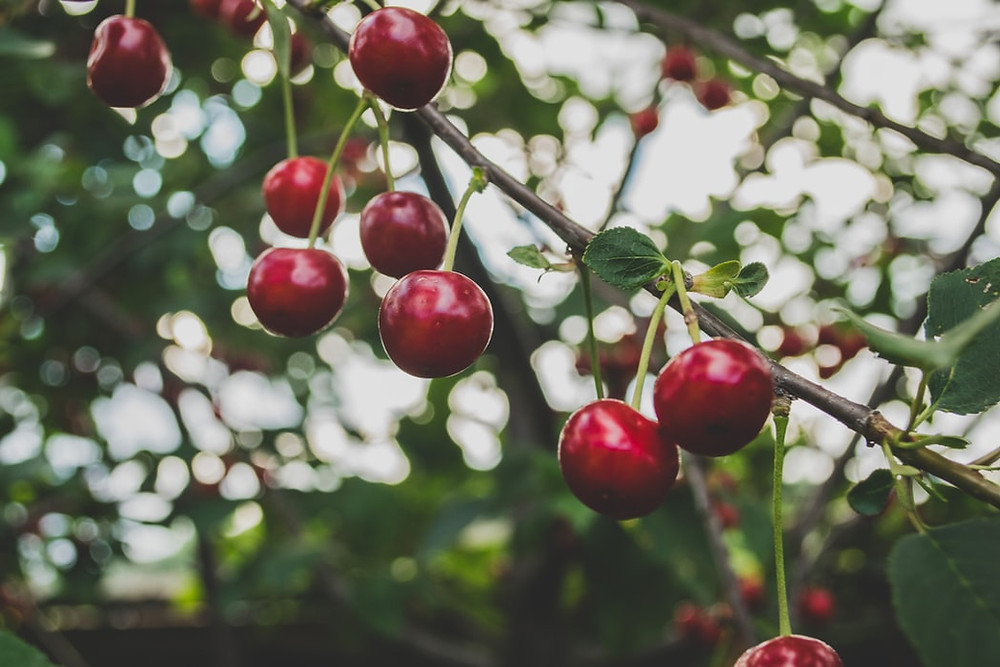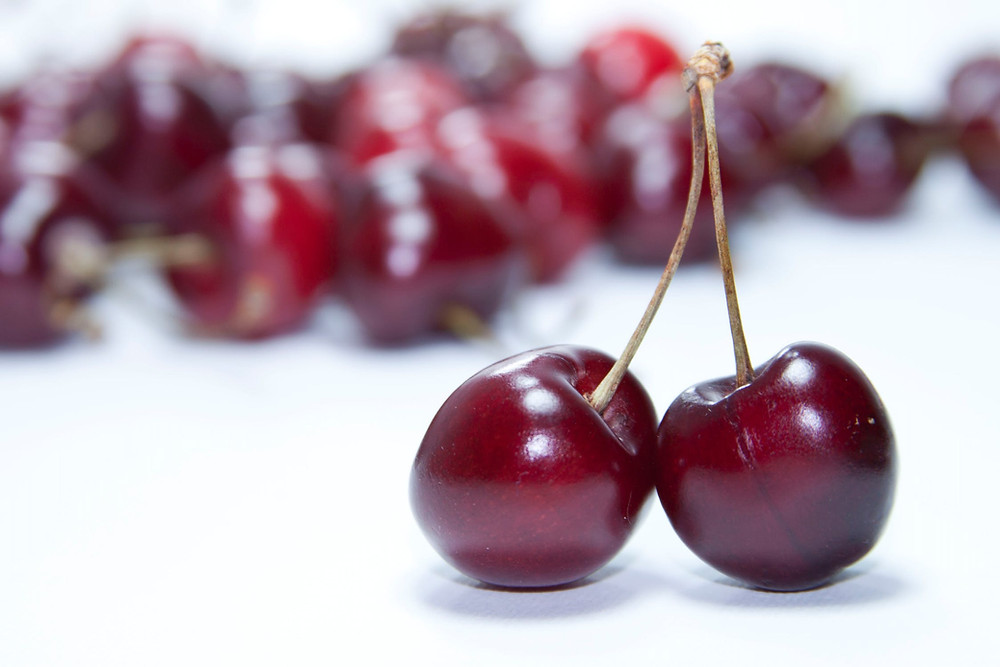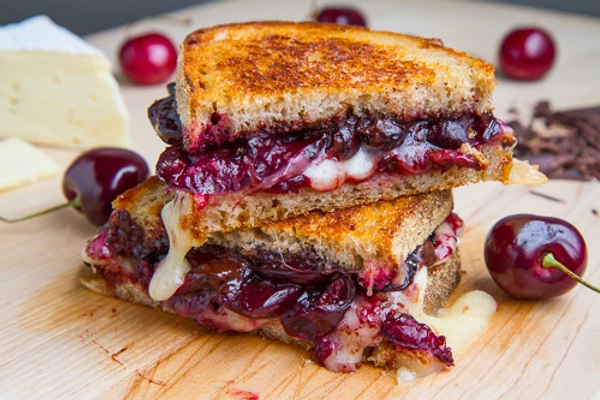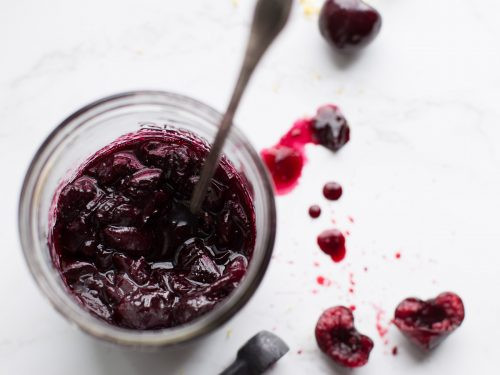In April of 2017, Tabletree were fortunate to attend the Flathead Lake Cherry Growers Association to hear Ralph Campbell M.D. speaking about the health properties of cherries. During this presentation we were pleasantly surprised by Tabletree being mentioned, and being featured in a Tabletree-focused slide in his presentation.
Dr. Campbell's books are available on Amazon - The Vitamin Cure series of books including "The Vitamin Cure for Children's Health Problems" and "The Vitamin Cure for Infant and Toddler Health Problems", co-authored with Andrew W. Saul, PhD
------------------------------------------------------------------------------------------------------------------------------------------------------------------------------------------------------------------------
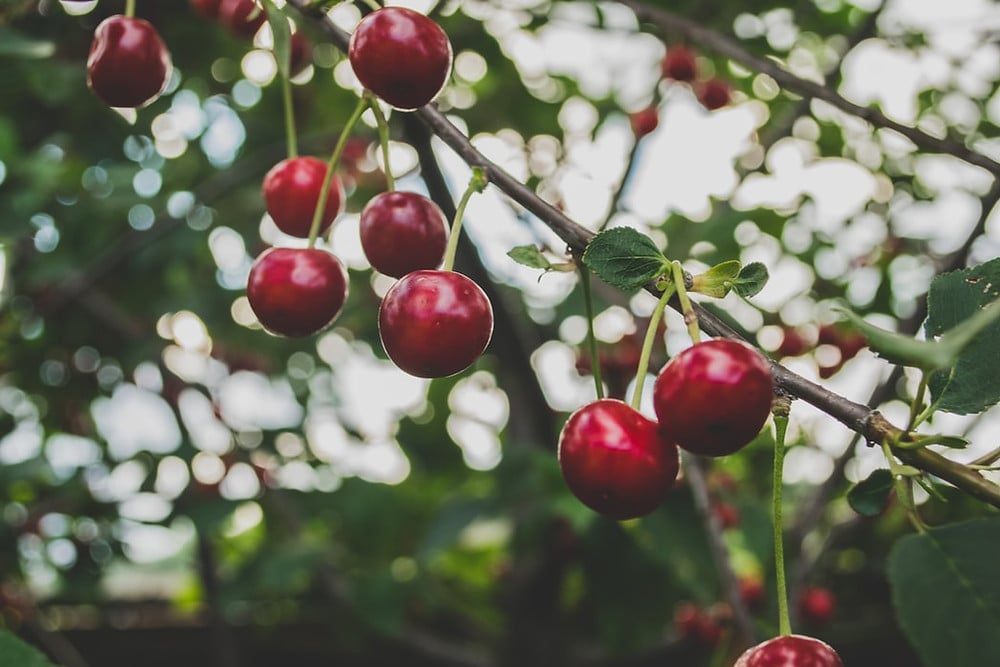
VALUABLE CHERRIES
The days are long gone when all you needed to know about cherries were that they were yummy and Mom said they were good for you. Fortunately, there now is more interest in why they are good for you. But the abundance of information, both pro and con, makes it difficult knowing who to believe. When I first got an interest in nutrition as it applied to health, I attended a nutrition meeting in which the professor admonished us to learn the underlying biochemistry that explained the "whys". I promptly went to the University book store and got a biochemistry text book. I had entered into a new world. I want to address some of the driving, underlying principles in language we can all understand. And I do mean all, because as I review, I can't believe I readily assimilated, years ago, so much of that material. [In addition to this written word, I touched on how we have become so "scientific" oriented--in my premed Having to study German, the seat of scientific medicine, as If a year or two of study will provide me with the ability to study a paper in the German language. Also, I found in my pediatric practice, I had to translate "medicalese" into understandable, plain English (American).
We hear the word "antioxidant" and know that antioxidants are good for us, but just what are they? The most well known are the vitamins C and E and beta carotene (a form of vitamin A). These are known as supplements, because they come in tablet or capsule form to supplement our diet. Aging is mainly due to oxidation processes that not only produce the signs of aging (such as wrinkled, crepe-paper thin skin) but inflammation---the basis of many diseases. An atom is oxidized when it gains positive charge (a proton) or loses negative charge (electron). It is reduced when the opposite takes place (loses positive charge or gains an electron). Rust (iron oxide) is an example. If the brain seems a bit rusty, this is why. Besides plain oxygen, free radicals and super oxygen can be formed. Oxygen's two electrons are like moons in orbits around the earth. If one is attracted to another substance (which undergoes a single electron reduction), what is left is very hungry to get an electron back which it gets from this neighbor---setting off a chain reaction. But if antioxidants are in the area, they can nip this reaction in the bud. So the antioxidant takes the hit and spares the other atom from oxidation, but itself has to be reduced by other antioxidants in order to do its job again. For instance, we know that beta-carotene replenishes vitamin E. Glutathione, made in the body and has the mineral, Selenium, as a necessary co-factor, is the master substance for replenishing antioxidants. Niacin (vitamin B3) is a critical part of a compound involved in this electron transfer. Adequate niacin levels, then, are essential in many health issues.
We know the evils of hydrogenated fats (transfats). In fatty acid metabolism, a free radical can react with hydrogen peroxide to form a very active singlet oxygen that reacts directly with an unsaturated fat (essential fatty acid) like an omega-3 (fish oil derived) fatty acid. The essential fatty acids contain a double bond in their side chains. But oxidation can extract hydrogen in the form of a hydride (H3) , thus forming a saturated fat that is different from a natural saturated fat like lard, that the body regards as a foreign substance. Like other oxidations from super oxygens, the process is self-perpetuating until antioxidants intervene. This is the end of "antioxidants 101". Now we get to the good part.
Bioflavonoids are members of phytochemicals. These fancy words translate to, "they are found in plants and are healthful". Some have stronger antioxidant power than others, and cherries are blessed with a high content of some of the best. We find these substances in darkly colored fruits and vegetables, blues, reds, purples, deep greens. Simply remembering this simple truth---deeply-colored fruits and vegetables are good, is sufficient. If I wanted to sound more scientific, I might recall (with effort)that quercetin is an anthocyanin and the better known resveratrol is a stilbenoid, both being of high repute. As we explain the application of these phytochemicals to health problems, I will refer to your own "Northwest Cherries Health Statements" and a remarkable book, "Eating on the Wild Side" by Jo Robinson. I say "remarkable" in that it looks like she has done at least two lifetimes of interesting research. For example, the apple comes from Kazachstan. Alexander the Great, in his campaign against the Persians, found this fruit and brought it back to Greece. These early cultivars of fruits were noted for their being small and anything but sweet, but had a high antioxidant content. Our original cherries also came from central Asia. But the Roman historian, Pliny the Elder, told of the popularity of cherries in Rome and that there were eight varieties of them [Could they have already begun breeding to develop sweeter varieties?] Choke cherries were our originals that were barely edible. French trappers who settled along the St. Lawrence river, brought in a French variety that was sweeter. In 1629, William Wood described eating the earlier variety: "They so furre the mouth that the tongue will cleave to the roof and the throat wax hoarse with swallowing those red bullies." The process of selective breeding to make cherries edible began in earnest. Unfortunately, this caused the antioxidant levels to be greatly reduced, as much as ten-fold. The Bing was the first of these. {Brian explained how the cherry got its name. The developer of the Bing thought of the name of one of his Chinese loyal workers.] Jo Robinson has tables in her book listing the antioxidant content of the different varieties. The sweeter Ranier has 1/4th the antioxidant content of the Bing. Royal Annes are two times better than Raniers in this respect. [Strange, since Raniers are a hybrid of Royal Annes and Vans.]
THE GOOD ANTIOXIDANTS IN CHERRIES
Cherries are a reasonable source of fiber and vitamin C, but it is their antioxidant content that makes them stand out. Cherries have good levels of quercetin, that weight for weight may be the most potent. I have references to this in my files that go back decades, but as I wanted to bring them up to date, I found an excellent source on line that all of us can tap into: Google quercetin and Dr. Axe. He writes clearly and backs it up with citations from institutions of learning, etc. The "Northwest Cherries Health Statements" find backing from other studies such as, "Bings cut inflammation", maybe not as thoroughly as tart cherries that other studies state, but there is a definite good effect. Dr. Axe states that inflammation is the root of most diseases. Inflammation is due to oxidation and is reduced or stopped with antioxidants that include the more potent dietary bioflavonoids. Oxidative stress itself is derived from a poor diet, mental and emotional stress, lack of good sleep, and exposure to environmental toxins. A ready supply of antioxidants is needed to nip these unhealthy effects in the bud.
Sweet cherries, then, can be a positive force in both the prevention and treatment of many health problems. The effect on arthritis is well known. Cherries are known to aid the excretion of uric acid from joints affected by gout. Gout, with its inherited tendency, can inflict its victims with a worst imaginable discomfort in toe joints, often in the big toe-foot joint, with heat, swelling and excruciating pain. The uric acid crystals, derived from purine-rich foods like the organ foods of liver, kidney, pancreas (particularly heavy sources), are metabolized to form uric acid crystals that deposit in those joints. The pain of gout is said to be so severe that the victim might not be able to withstand the weight of a light-weight blanket over the foot. The jury is out on the issue of organ meats. Liver is bad for you because it filters out and stores many toxic things contained in our foods; but it is good for you because it is high in B vitamins. Probably organic liver would contain the least bad stuff and the most good. In days of yore, only the rich could afford these foods; so the poor liked to believe that gout was punishment for their indulgences. The process is enhanced by certain diuretics and low-dose aspirin.
We singled out arthritis because of the many studies that support the value of these bioflavonoids in the prevention and treatment of arthritis, but they are of great value by employing them in what we might call "the big three": cardio-vascular disease, cancer and Alzheimer's disease. The most prominent heart disease is a heart attack due to the coronary arteries being so compromised from deposits in them that inadequate amounts of oxygen and nutrients get to the heart muscle. This same process, atherosclerosis, can occur in other arteries, such as those in the legs or the carotid arteries or cerebral arteries which nourish the brain [causing dementia on a different basis than Alzheimer's disease.] Getting to the basics, cholesterol becomes a bad actor when it is oxidized and forms plaque that adheres to the inner lining of arteries. Doctors may be concerned when imaging shows calcium deposits in arteries, but this doesn't represent a problem with calcium metabolism but shows that oxidized cholesterol is there for calcium to cling to. In Jo Robinson's book, she states that cherries have the property of lowering LDL levels.The cholesterol deposits are slow to develop; so the longer a person has been on a healthful diet, the better.
These good antioxidants also quell inflammation, a major factor in disease. We have discussed arthritis which is certainly an inflammatory disease. A University pathology department in Italy addresses quercetin's anti-inflammatory properties but also its antibacterial and antiviral properties. So, is quercetin a cure-all substance? Possibly! If started early enough in life.
THE VALUE OF CHERRY JUICE
The use of another, rich in antioxidants, fruit juice, cranberry juice, as an accepted treatment for women suffering from bladder infection, is well known. Since cranberries and cherries share containing some of these antioxidants, cherry juice should also have some healthful benefits. And it does. Studies have shown its value in relieving muscle damage due to over-use of muscles such as that which follows running a marathon. More studies show that tart cherry juice is better than sweet cherry juice, but sweet cherry juice still is of great value in this respect and is greatly more palatable. Both straight cranberry and tart cherry juices are hard to swallow, which is why either one is hard to find on grocery store shelves, where other sweet juices are added to make them acceptable, greatly diminishing their medicine-like value. Your "Tabletree" cherry juice fills a valuable spot by providing an unadulterated cherry juice. It needs to be well publicized since it, alone, is filling an essential nitche.
I guess we can say cherries, either as fresh or frozen or as juice, are great tasting. And incidentally, they are also good for you in many ways.
STRIVING FOR SAFETY
Rachael Carson was an ecologist before the term was invented. She had written several books about the seas , in the '50s, and how they were changing, not for the better. There was then a time of using pesticides, developed from WWII nerve gases, with little regard for their health effects. Her 1962 book, "Silent Spring" gained widespread attention and could be considered the beginning of the organic movement. She revealed the effect of DDT on the California candor. This bird was dying out due to DDT's effects that included egg shells too fragile to support life for the unborn chicks. Our government stepped up to the plate by applying regulations through the Environmental Protection Agency (EPA) that established tolerance levels for some while banishing others (such as DDT). Of course, opposition from the industry has been a problem. Some companies complied willingly; others fought the regulations. Some in this room have witnessed the horrible consequences of either lack of safety education or not trusting or believing those offering it. They also remember how spray applicators were warned to report to the County Health Department to have their blood checked for cholinesterase levels when having symptoms of diarrhea and vomiting, pin-point pupils, headache brought about by this organophosphate pesticide by inhibiting this enzyme that breaks down acetylcholine and allowing too much of it to accumulate at the synapses. With these symptoms, one must get away from Diazinon for a period of recovery. If not, the problem can progress to convulsions and death.
Similar regulations are applied worldwide--wherever pesticides are used. Toxicity that appears shortly after exposure is relatively easy to spot. Not so for long term toxicity. This means that regulations have to be revised periodically after new studies show that current levels are too high for attaining truly safe levels. Countries have to communicate with each other. We need to consider the other side of the coin: being overly--regulated. Many times, regulations are too severe and unworkable, as if those who designed them had failed to work closely with orchardists as they were formed. A country in which there is less opposition to regulation might more quickly take action to enforce proper regulations, making our EPA seeming to be dragging its feet. But we must continue working together to get the balance of safety and practicality. Meanwhile do as the Flathead Growers Association does: Even when we can't fully comply with organic certification, strive to come as close as we can. And keep searching for new ways to achieve that goal.
In the word of Julia Child: Enjoy!

Ralph Campbell, M.D., Author - "The Vitamin Cure for Infant and Toddler Health Problems" and
"The Vitamin Cure for Children's Health Problems", co-authored with Andrew W. Saul, PhD
.png?width=363&height=178&name=Tabletree_logo%20(1).png)

